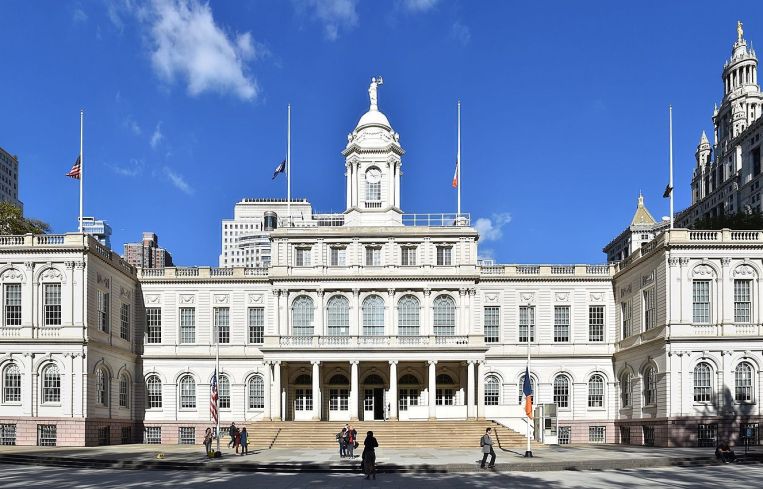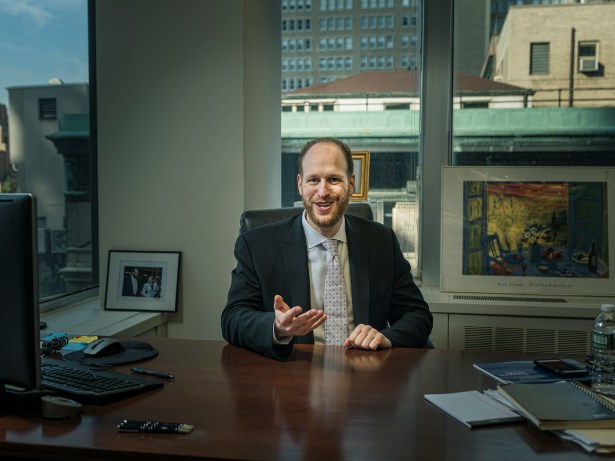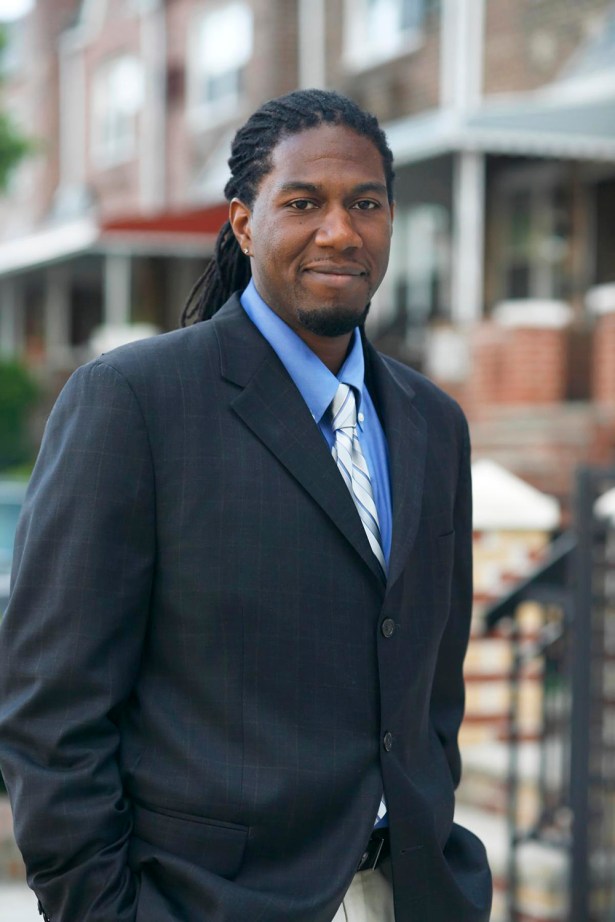Power Politicians: The Movers and Shakers of Real Estate Policy
By Rebecca Baird-Remba April 26, 2017 3:00 pm
reprints
Whether it’s about construction safety, tenants’ rights, zoning or affordable housing, real estate is omnipresent in New York City politics. Not everyone can score a spot on our Power 100 list, but it’s worth recognizing the folks who are shaping the city’s neighborhoods and land-use policy. Some of these officials are working at cross-purposes with the real estate industry by advancing legislation that will make life more difficult for landlords and developers but protect tenants or construction workers. Others are shepherding through rezonings that will generate millions in revenue for construction companies and builders. A few are doing both—trying to encourage economic development and job creation while ensuring legal protection for residents who are vulnerable to rising rents and unscrupulous landlords.

David Greenfield
New York City Councilman
The New York City Council controls much of the city’s land-use policy, and Councilman David Greenfield, who chairs the land-use committee, is the first line of defense against developers who want to game the city’s zoning and affordable housing rules. He and his staff also shape policies that affect height restrictions, affordable-housing mandates and landmarking.
Greenfield helped push through two of the mayor’s staple housing policies—Mandatory Inclusionary Housing and Zoning for Quality and Affordability—just over a year ago. Simultaneously, along with Speaker Melissa Mark-Viverito and Councilman Rafael Espinal, he ushered the deeply contentious rezoning of East New York, Brooklyn, through the 51-member council. The proposal faced fiery opposition from tenant activists, affordable housing groups and other local politicians, who charged that it wouldn’t produce much housing that current East New York residents could afford. The city proposed the upzoning because it would produce 6,000 apartments over the next decade, half of which would be affordable for families of three earning between $23,350 and $69,930. The other half of the units would be market rate.
“Getting East New York [rezoned] was a big accomplishment,” Greenfield said, since opponents were vocal and well organized.
Another accomplishment Greenfield touts is the passage of Intro 775-A in June 2016. The bill, which preservationists staunchly opposed, gives the Landmarks Preservation Commission a year to vote on whether a property should be landmarked, beginning when the commission places a building on its calendar. For historic districts, the deadline for a vote is two years after an area has been calendared. The legislation also gave the LPC 18 months to deal with its massive backlog of historic properties, which stretches back 50 years, to when the commission was first created by Mayor Robert F. Wagner.
“It was one of the most difficult things I’ve ever done, legislatively,” he explained. “You have these buildings that have been on the list for 60 years. Now, a lot of iconic buildings have protections,” including the United Palace Theater in Washington Heights and the Coca-Cola sign in Long Island City.

Dan Garodnick
New York City Councilman
Dan Garodnick has been working to rezone Midtown East for five years. In the next few months, the policy will finally become a reality. The proposed rezoning will map a new land-use framework onto 78 blocks around Grand Central Terminal. Developers of office buildings will be able to build bigger than current zoning allows in exchange for funding public transit or street improvements or for purchasing air rights from landmarked properties in the district. The new zoning could add up to 6.8 million square feet of new office space to Midtown East if all goes according to plan. It could be part of the zoning code by the end of this summer.
Garodnick has also continued his crusade to protect the tenants of Stuyvesant Town-Peter Cooper Village, where he is a lifelong resident. In November, he introduced a bill that would require the city’s Department of Housing Preservation and Development to track landlords who may be engaged in so-called predatory equity. He pointed to Tishman Speyer’s purchase of Stuy Town a decade ago as an example of the practice.

Gale Brewer
Manhattan Borough President
Gale Brewer wields quite a bit of power to shape projects that need a rezoning and pass through the city’s public review process. She often uses her role in the uniform land-use review process (ULURP) to push for more affordable housing, landmark protections and more “contextual” development. Last month, she expressed opposition to the de Blasio administration’s plan to rezone the Garment District. The proposal would remove a requirement that landlords on industrially zoned blocks devote half their floor area to manufacturing if they’ve converted their buildings to other uses. Brewer felt strongly that the garment business needed to stay in Manhattan, not relocate to Sunset Park, as the administration has proposed.
“What I’ve heard is this: Most of the manufacturers who are still in the Manhattan Garment Center are there because they need to be,” she said in a press release. “The administration seems to have trouble understanding that.”
She’s also pushed back against plans to build a trio of massive skyscrapers on the Lower East Side. The controversial proposals—from JDS Development Group, Starrett Corp. and CIM and L+M Development Partners—are currently in the public scoping phase of review, which means the city is collecting feedback. The city council member-turned-borough president was able to delay an environmental scoping hearing on the projects earlier this month.
One of Brewer’s biggest accomplishments over the past year has been getting the Midtown East rezoning through ULURP. She and Councilman Garodnick co-chaired a steering committee that helped craft an extensive plan for the rezoning two years ago. A few weeks ago, she approved the new zoning, which will head to the City Council this summer, where it will likely be approved.

Brad Lander
New York City Councilman
Since taking over Mayor Bill de Blasio’s former Brooklyn City Council seat in 2009, Brad Lander has been at the forefront of progressive housing policy.
For upwards of a decade, the councilman has been trying to pass legislation that would require landlords to obtain a certification of no harassment—meaning they had no record of harassing tenants—from HPD to convert or renovate certain residential buildings.
Lander explained that he had been working on the proposal since the 2005 rezoning of Hudson Yards. “Even then people could see that speculation related to rezoning meant speculators were pushing people out so they could redevelop those buildings,” he said. The policy won’t just apply to areas that are being rezoned, and the criteria may expand to look at landlords’ previous eviction and harassment cases. Of course, if it’s too broad and applies to too many buildings, it will create onerous hurdles for building owners who want simple renovations.
“If you’re in the process of converting a moderate-income rental building to luxury housing, the punishment for harassing people out is a slap on the hand,” he added, noting that the rule would work in concert with other legislation aimed at protecting tenants. He hopes to release a draft proposal in the near future.
Lander is also leading the charge to reform the city’s fair share policy, which determines where the administration sites public necessities like parks, homeless shelters, waste transfer stations, libraries and wastewater treatment plants. In February, he released a report calling for the city to publish detailed data on where such facilities are located right now and how many are in each community district. This would be a departure from the current policy, which gives city agencies complete discretion over what information they release. Transparency would allow neighbors to hold the city accountable for opening too many shelters or waste transfer stations in a neighborhood that’s already oversaturated with them, and it would make it easier for officials to justify decisions to angry residents.

Jumaane Williams
New York City Councilman
After years of working as a tenant advocate and community organizer, Jumaane Williams has become a prominent voice for low-income tenants and working class New Yorkers on the City Council and chairs the committee on housing and buildings. Last year, when the council was negotiating the Mandatory Inclusionary Housing (MIH) policy, Williams said he was one of the members who advocated for the zoning framework to include additional low-income housing from developers trying to build new residential projects. Ultimately, he voted against MIH because he felt it wouldn’t do enough to provide housing for the poorest New Yorkers.
“I hope that we as a body look at all the zoning [that we create],” he said. “We have a tendency to speak one way about homelessness and housing in public, but the packages of legislation we release say something different.”
Williams also co-sponsored a divisive bill that would impose safety training and apprenticeship requirements on construction workers who are working on buildings that are at least 10 stories tall. Nonunion construction groups strongly opposed the legislation because they claim they can’t afford to run two- to three-year-long apprentice programs like construction unions do.
“We’ve helped push the administration and DOB to take some strong positions on construction safety,” he said. “Going after developers who are setting up the environment where people are getting killed.”
Last month, he held a hearing on the 1970s-era Tenant Interim Lease program, which allows tenants to pay relatively low rents with the aim of ultimately purchasing their apartments for just $250. Many of the properties in the program were formerly vacant buildings, and residents moved in assuming that the city would repair them and later allow them to buy the units. In many cases, neither the repairs nor the purchases ever happened.

Alicia Glen
Deputy Mayor for Housing and Economic Development
Alicia Glen got her start in city government working for then-Manhattan Borough President David Dinkins in the late 1980s. A decade later, she served as an assistant commissioner for housing finance at HPD under Mayor Rudy Giuliani. Now, the Upper West Side native oversees more than 40 New York City agencies, including HPD, the Department of City Planning, New York City Housing Authority, the Economic Development Corporation, Small Business Services and the LPC.
While much of Glen’s work happens behind the scenes, one of her higher profile efforts was crafting NextGeneration NYCHA, the mayor’s controversial plan to generate revenue for the city’s cash-strapped public housing agency. The proposal involves developing a mix of affordable and market-rate housing on open space around NYCHA’s aging high-rises. Over the past year, the city has pushed forward with building the first round of NextGeneration projects, which will bring nearly 500 low-income units to three different new buildings at NYCHA developments in Brooklyn and the Bronx.
Glen has also been responsible for directing the administration’s efforts to build and preserve 200,000 affordable apartments by 2025. The city claims it has financed 20,854 new below-market apartments since the affordable-housing initiative was rolled out in early 2014. However, when it comes to building housing, Glen and her colleagues at HPD and EDC have been stymied in their efforts by a variety factors, including the expiration of the 421a tax exemption.
Many by-right affordable-housing projects have sailed forward smoothly, but developments that require rezoning have struggled to make it through the city’s lengthy public review process. Last year, a handful of projects died during public review because City Councilmembers who controlled the districts where the buildings were planned opposed them. The ones that didn’t survive included a 100 percent affordable rental development in Sunnyside, Queens, and a 15-story, 50 percent affordable building in Inwood.
Despite the setbacks, the city has green-lighted the construction of 4,700 affordable apartments in the past year, according to HPD. Success stories range from a 992-unit development in the South Bronx called La Central to the contentious rezoning of St. John’s Terminal in Hudson Square, which will generate 1,500 apartments, 476 of which will be affordable.


